 |
News | Irina Kozyreva | The studio | Festivals | Performances | Photo | Contacts |
 |
News | Irina Kozyreva | The studio | Festivals | Performances | Photo | Contacts |
Folklore is a cultural property of all people which reflects the customs, habits, music, costumes and history.
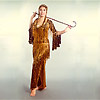 Assay is the Arabic notion of cane. The legend says that the idea to dance this way occurred to shepherd-women, who drove sheeps with the help of a curled end stick. Historians insist on the other origin of the dance: men in the Upper Egypt used to walk with long bamboo sticks which were used as weapon. Gradually there a specific men’s dance Tahtib came to existence, which imitated a struggle with sticks. Women made this dance more skittish and lighter. So a separate style appeared – Racs el asaya.
Assay is the Arabic notion of cane. The legend says that the idea to dance this way occurred to shepherd-women, who drove sheeps with the help of a curled end stick. Historians insist on the other origin of the dance: men in the Upper Egypt used to walk with long bamboo sticks which were used as weapon. Gradually there a specific men’s dance Tahtib came to existence, which imitated a struggle with sticks. Women made this dance more skittish and lighter. So a separate style appeared – Racs el asaya.
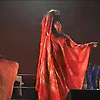 This is the incredibly delicate and lyrical dance. Musical rhythm differs from traditional classical music. In translation from Arabic this word means “bay”. This dance is spread in countries of Persian Gulf such as Oman, Qatar, Bahrain and other. A traditional clothes is Abaya (Fustan Haligi).
This is the incredibly delicate and lyrical dance. Musical rhythm differs from traditional classical music. In translation from Arabic this word means “bay”. This dance is spread in countries of Persian Gulf such as Oman, Qatar, Bahrain and other. A traditional clothes is Abaya (Fustan Haligi).
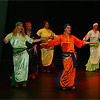 The name of this dance comes from name Baladi. In translation from Arabic it means “Native Land” or “Native town”. This dance used to be very popular in all Egyptian villages. Usually it was performed by girls. A traditional clothes is white holobeya with a shawl on the thigh and a shawl on the head.
The name of this dance comes from name Baladi. In translation from Arabic it means “Native Land” or “Native town”. This dance used to be very popular in all Egyptian villages. Usually it was performed by girls. A traditional clothes is white holobeya with a shawl on the thigh and a shawl on the head.
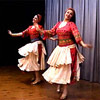 It’s a dance of biduins who better than others managed to save their traditions from old time to nowadays. The name of the dance comes from Arabic word hag’l and means a jump or a leap. It is explained by the fact that these people lived in a desert where the sand is hot. That’s why the dance is made of jumps, leaps and bullies. It is dynamic and energetic. It is performed by young girls.
It’s a dance of biduins who better than others managed to save their traditions from old time to nowadays. The name of the dance comes from Arabic word hag’l and means a jump or a leap. It is explained by the fact that these people lived in a desert where the sand is hot. That’s why the dance is made of jumps, leaps and bullies. It is dynamic and energetic. It is performed by young girls.
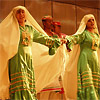 Nubia borders on Sudan. People who live there are very cheerful and love to dance together. That’s why the character of the dance is merry. Its rhythm is particular. It’s performed by the crowd in colourful costumes.
Nubia borders on Sudan. People who live there are very cheerful and love to dance together. That’s why the character of the dance is merry. Its rhythm is particular. It’s performed by the crowd in colourful costumes.
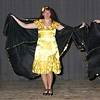 Translated into Arabic Alexandria sounds as “Ascandarani”. The style of this dance is cheerful, playful and inflammatory. A traditional clothes is a dress and a cloak (Melaya). Melaya is a part of the national clothes of women in Alexandria.
Translated into Arabic Alexandria sounds as “Ascandarani”. The style of this dance is cheerful, playful and inflammatory. A traditional clothes is a dress and a cloak (Melaya). Melaya is a part of the national clothes of women in Alexandria.
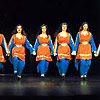 Dabke is a national folklore dance which was born in Lebanon. But it is performed in many countries of Middle East each country having its own interpretation. In Arabic it means “trample of feet”. Its character is energetic, inflammatory and temperamental. The soul and energy of people live in it. This dance symbolizes solidarity and union of the nation. This dance lives in the hearts of Lebanese people and is danced everywhere, but not only on special occasions and holidays.
Dabke is a national folklore dance which was born in Lebanon. But it is performed in many countries of Middle East each country having its own interpretation. In Arabic it means “trample of feet”. Its character is energetic, inflammatory and temperamental. The soul and energy of people live in it. This dance symbolizes solidarity and union of the nation. This dance lives in the hearts of Lebanese people and is danced everywhere, but not only on special occasions and holidays.
 The birth of a dance in India is lost in the depth of centuries. The sight of dancing Shiva is the highest expression of the essence of the Indian dance. The system of Indian dance is the oldest and the most complicated in the world.
The birth of a dance in India is lost in the depth of centuries. The sight of dancing Shiva is the highest expression of the essence of the Indian dance. The system of Indian dance is the oldest and the most complicated in the world.
There two types of classical dance: a solo dance in one of seven dance styles – brahat-natyam, kahtak, manipuri, kathakali, kuchipudi, odissi and mohini-attam, and dancing drama.
In Natyashastra, a well-known tractat written in the 2-4 centures A.D, two types of dance are mentioned: akaharya - a solo dance and anekaharya – a group dance.
Dance forms can be divided into two main categories: nritta – a “pure” dance, and nritya – a dance conveying a certain idea. The third kind of dance art is natya – a theatrical performance.
A good spectator will always notice when a soul is put in a dance or he is offered a cold formal performance. This is the main criteria either in the classical Indian dance or in any other kind of art.
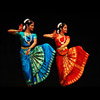 Among all kind of classical dance in India this dance is considered to be the oldest. Through centuries it was performed by novices of devadasi in temples in the southern India. Movement, mimics, and music are present in equal part of this beautiful dance Tamilnadu. This dance is spiritually religious and is performed by one she-performer. Possessing stylish and complicated technique bharatnatyam uses elements of nritta and nritya. Songs appeal to the love theme, but not sensitive, they are performed solemnly, with a high mood. Its technique is stylish and complicated.
Among all kind of classical dance in India this dance is considered to be the oldest. Through centuries it was performed by novices of devadasi in temples in the southern India. Movement, mimics, and music are present in equal part of this beautiful dance Tamilnadu. This dance is spiritually religious and is performed by one she-performer. Possessing stylish and complicated technique bharatnatyam uses elements of nritta and nritya. Songs appeal to the love theme, but not sensitive, they are performed solemnly, with a high mood. Its technique is stylish and complicated.
Bharatnatyam starts with alrippi, which creates the effect of an opening body as a gift to god. Having looked aside and having graciously bowed, a dancer spreads this movement along the whole body. Smooth and sharp movements follow each other similar to the mridangam drums rhythm and singing of nattuvara. And legs with jingles on them beat ten various kind of rhythm . This dance demands great tension of physical and emotional powers.
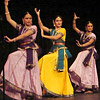 In contrast to bharatnatyam the kathak dance style is spread in the northern India and is performed both by men and women. In its modern form it comprises two directions – religious and secular. The dance comes from simple religious songs of kathakers which included some elements of drama. Kathakers were narrators and musicians in temples in the area of bradzh, state Uttar Pradesh, in the region Mathure-Brindaban, where as a legend says god Krishna was born. The modern kathak differs from the form he used to have in the period of formation. With the passing time kathak moved to courts of kings and nobility where it received its today’s sharpness and gracefulness. The peculiarity of the dance is in intensive foot work. Impetuous pirouettes of a dancer and complicated variations of rhythmical picture ague with the part of drums. Pantomime is based on retelling some episodes of Krishna’s life.
In contrast to bharatnatyam the kathak dance style is spread in the northern India and is performed both by men and women. In its modern form it comprises two directions – religious and secular. The dance comes from simple religious songs of kathakers which included some elements of drama. Kathakers were narrators and musicians in temples in the area of bradzh, state Uttar Pradesh, in the region Mathure-Brindaban, where as a legend says god Krishna was born. The modern kathak differs from the form he used to have in the period of formation. With the passing time kathak moved to courts of kings and nobility where it received its today’s sharpness and gracefulness. The peculiarity of the dance is in intensive foot work. Impetuous pirouettes of a dancer and complicated variations of rhythmical picture ague with the part of drums. Pantomime is based on retelling some episodes of Krishna’s life.